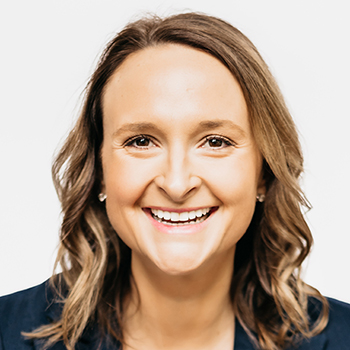
In early February, the HDG team attended its home state LeadingAge conference, the LeadingAge Minnesota Institute & Expo. The Institute is always a great time to learn, connect with friends and colleagues, and share what we learn in our own communities and in working with providers from coast to coast. Interest in PDPM outcomes is strong as evidenced by the attendance for The Real Truth of PDPM – Early Learnings for Senior Leadership session that I presented. Following is a summary of the presentation.
Mad Rush to the Finish Line
The Patient-Driven Payment Model (PDPM) was live on October 1, 2019, and it was a mad rush to the finish line! Just prior to October 1, some glitches were found with the Centers for Medicare and Medicaid Services (CMS) PDPM grouper. These glitches impacted the ability to successfully complete the MDS generating a HIPPS code, and submission of Interim Payment Assessments (IPAs) was put on hold. Known issues around HIPPS codes, interrupted stays, and transitional IPAs were identified. There were also updates to the final grouper logic and submission technology.
In addition, right before and after the go-live date, many Medicare Advantage plans adopted PDPM, especially if they previously paid based on RUGs. Notice to providers was lacking in some cases, or provided very late, and the lack of provider guidance resulted in duplication of assessments to ensure that reimbursement was not lost. In some cases, authorizations are being provided for a low PDPM rate prior to submission of the MDS.
In early October, the Medicare claims processing manual was released with an effective date of November 5, 2019.
Early PDPM Financial Indicators
Early indications for financial performance under PDPM have been positive for many providers, likely due to a Non-Therapy Ancillary (NTA) bump for all patients on Medicare Part A caseload as of October 1 (300 percent of NTA component for October 1–3). Other factors include increased attention to payment-sensitive items and clinical service line development.
However, before you throw a party, remember that the NTA jump at the start of PDPM is a one-time event with a 4 percent increase, and PDPM was designed to be revenue neutral—adjustments will follow.
Common PDPM Challenges
While the transition has gone well for most providers, and many are seeing strong financial indicators, we are observing several common challenges among providers, including:
- Identifying “daily skilled need” when therapy is not the primary reason for skilled care or when the patient is discharged from the therapy case load.
- Selecting primary and secondary diagnoses and ensuring that claims and MDS data are in sync.
- Implementing Presumption of Coverage.
- Completing functional scores (section GG) timely and accurately.
- Determining when to do Interim Payment Assessments (IPAs).
- Selecting the best 5-day Assessment Reference Date (ARD).
For challenges with IPAs, we offer the following guidance: IPAs are optional, and CMS states, “we note that while a SNF’s decision to complete the IPA itself is indeed optional, the SNF’s underlying responsibility to remain fully aware of (and respond appropriately to) any changes in its resident’s condition is in no way discretionary.” The entire interdisciplinary team (IDT) should carefully review IPAs to determine payment for all components before proceeding. Also remember that IPAs cannot be combined with any other MDS assessments.
What’s Next for PDPM
Other changes are expected, including a proposal by CMS that section G be eliminated from all federal MDS item sets effective October 1, 2020, in an effort to reduce duplicative paperwork. Individual states may use the Optional State Assessment, and we expect this may cause states to reconsider Medicaid case-mix strategies.
As previously mentioned, PDPM was created to be budget neutral, and there will be increased scrutiny by CMS, OIG, and MedPAC of financial and clinical outcomes under new payment models. This will include analysis of coding creep, payment weight recalibration, and margins analysis.
Operational Imperatives
As we continue to work in a PDPM world and see ongoing changes and adjustments, there are several key areas that providers must focus on. Operational processes must be well documented and followed and should include:
- Effective morning meeting
- Documentation consistency and accuracy
- Medicare tracking tool initiated on admission
- Admission documents completed prior to or upon admission
- Payor source verified prior to end-of-month billing
- Triple check completed in total
- 72-hour meeting with patient, responsible party, and IDT
- Notification of late MDS/default days
- ICD-10 coding and MDS accuracy
In addition, clinical coding accuracy and documentation audits should be completed to confirm that payment-sensitive items (e.g., SLP and NTA comorbidities) are accurately and completely captured.
Review of Contracts and Performance
As we moved toward October 1, 2019, there was much last-minute scrambling to sign therapy contracts. Many contracts pay based on a percentage of PDPM therapy components, and some pay based on a percentage of the total rate. There are pros and cons to each approach. Most providers initially reported few day-to-day changes, but they need to really look at the data. Many of the contract terms included an early 2020 review, and now is the time. These reviews should include:
- How have revenue and expenses changed since October 1?
- GG utilization—is therapy benefitting from the GG score while the nursing component is under-reflective?
- Any changes in other payor utilization? Have been seeing a trend of increased Medicare Part B/long-term utilization; is it appropriate?
- Has your staffing changed? Check your PBJ submission.
- Any concerns from staff or residents on quality or satisfaction reports?
- Decrease in meeting attendance/IDT presence?
- Decrease in length of stay or frequency resulting from therapy changes?
- More speech therapy services? More involvement from ST? Appropriate?
Ultimately, SNFs should move their contracts or in-house compensation to a value-based structure, adjusting some portion of the payment for quality outcomes and processes.
Moving Forward Post-Implementation
HDG can help providers seize opportunities and address challenges as the new payment system continues to evolve. Our solutions include education and training, clinical coding and reimbursement auditing, benchmarking and rate projections, clinical service line development, and more. Please call or email us at 763.537.5700 or info@hdgi1.com and visit our website.












